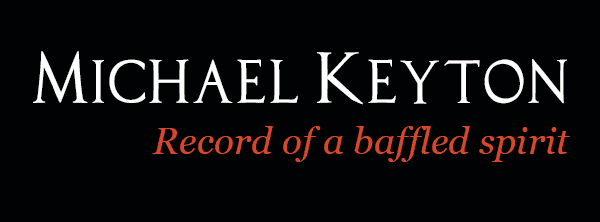
The long journey to South Dakota began. I’d deliberately chosen a circular land-route across America to physically experience the sheer immensity of the country. This was it. Every day was it. Zen and the art of staring at landscape.
We stopped off at Mitchell, went to the Corn Palace and bought slides, all of which I’ve lost. I did take one photograph which now hangs in our downstairs cloakroom. The Corn Palace shone, resplendent in a Byzantine mosaic of coloured corn. It just blazed out, a visual smack in the face beneath a hard blue sky.
I looked around and wondered whether all this had once been part of the ‘Badlands’. The fringe at least.
The earliest detailed record of the Badlands dates back to 1823 when a party of frontiersmen travelled from Fort Kiowa (near present day Chamberlain a few miles west of Mitchell) enroute to Yellowstone.
One of the men, James Clyman wrote in his diary:
‘…in the evening we camped on White Clay Creek, a small stream running thick with a white sediment and resembling cream in appearance but of a sweet pungent taste. Our guide warned us from using this water too freely as it caused excessive costiveness, which we soon found out.’
One presumes they ignored their guide’s warning then.
Costive was one of those words I hadn’t come across. At first I thought it might be akin to ‘pensive’. Pensive in the Badlands. It sounded good.
Then I discovered its meaning. Constipated in the Badlands, not so good. Mind, the alternative would have been worse. It got me thinking. How did those Frontiersmen clean their bottoms? Did Davy Crocket smell?
There was grass of course; plenty of that on the plains, in fact that’s all there was other than Bison and prairie dogs; and they’d have been worse than useless. But grass? Messy on the fingers, rubbing bottoms raw, and providing unexpected eco-systems for seeds between the cheeks.
Rye grass is pretty amazing, though not for bottoms. In only four months a single rye grass plant can send out nearly four hundred miles of roots, and those roots tangle with adjacent plants forming a thick and tenacious network. This checks erosion and also soaks up rain. The root system also allows fast recovery from prairie fires, the blackened landscape soon speckled with green as the roots send up fast growing shoots.
Just as well. The great grasslands evolved on a thin layer of soil resting on vast prehistoric deserts that covered the entire central belt of North America. The root system provided the best, perhaps only defence against climate change and wind.
Look at the Corn palace and you remember how much of the indigenous grass has been destroyed, pretty much all of it, replaced by corn and wheat, and stretching out as far as the eye can see, north to Canada and beyond. It doesn’t take much to envisage the thin topsoil with its new, less tenacious root system, flaking then rolling like a great turf carpet, as temperatures mount and strong winds blow.
It was time for a beer. I wandered down a dusty street and found a bar. Three men were drinking out of bottles and watching ‘Great American Hero’ on TV. They found it down-right funny and laughed out loud without inhibition. The culture here was different. A ‘cooler’ crowd in New York would have ignored it, talked through it, at best smiled.
I drank two beers and would have stayed for more if I could. I love bars. The drink is part of it, but it’s more than that. I love being a stranger, whether in a different town or foreign land. And every bar or pub has a different buzz. I’m seeing myself here as a slightly inebriated bee; time to return to the coach and remind my new friends to avoid the water around here, especially as we approach white river.













